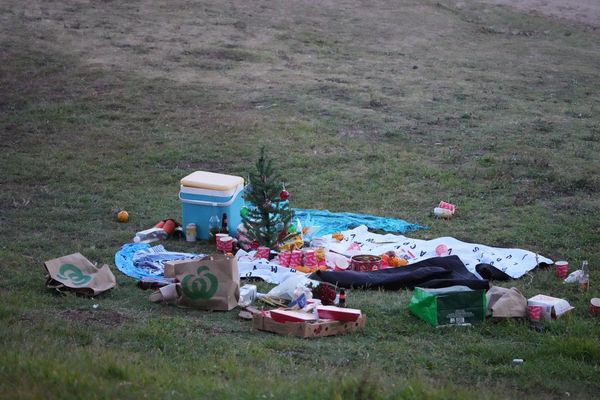
A decade after the onset of a sea star wasting disease (SSWD) epidemic considered the largest ever documented in the wild, researchers have identified the microbial culprit responsible: a strain of the bacterium Vibrio pectenicida.
In 10 years, the bacterium has ravaged sunflower sea stars (Pycnopodia helianthoides), a large sea star or starfish, along the western coast of North America, with a loss of 5.8 billion since 2013 – or 90% of the total global population. The sunflower sea star is on the International Union for Conservation of Nature’s red list of critically endangered species.
Previous studies had tested for a pathogen in tissue samples and yielded inconclusive results. Instead, by examining the sea stars’ coelomic fluid, which acts like blood, researchers were able to confirm with certainty V pectenicida’s role in causing SSWD due to its high abundance there.
Infection with the V pectenicida strain FHCF-3 begins with exterior lesions, leading to limb loss and contortion, and ultimately kills afflicted individuals by melting their tissues into a white, mucus-like paste. Identifying the disease in afflicted sea stars was impossible without a known pathogen, as sea stars can respond with similar visual signals to other stressors such as low oxygen, salinity variation and extreme heat. The indirect link between rising ocean temperatures and SSWD remains a key area of interest, since Vibrio species are known to proliferate in warm water during seasonal variations and anomalous marine heating events.
The research, published this week in the journal Nature Ecology & Evolution, was led by Dr Melanie Prentice and Dr Alyssa Gehman, of the Hakai Institute in British Columbia, Canada, as part of a four-year international collaboration involving the University of British Columbia, the University of Washington and the Nature Conservancy, among other parties.
The decline of sunflower sea stars has ramifications for marine ecosystems beyond the loss of a single species. “Identifying the cause of SSWD is incredibly impactful,” Prentice said. “In the absence of sunflower stars, [kelp-eating] sea urchin populations increase, which means the loss of kelp forests, and that has broad implications for all the other marine species and humans that rely on them.”
Kelp forests provide a habitat for thousands of marine creatures, support local economies through fisheries and recreation, and are culturally important for First Nations and tribal communities. They also stabilise sediments, protect coastlines from storms, and are an important carbon sink for sequestering carbon dioxide.
Though the epidemic is still ongoing, the hope is that this breakthrough will aid recovery and treatment efforts for various sea star species across the world and the ecosystems affected by their decline. Methods being explored include captive breeding for resistant individuals and developing probiotic solutions that can be introduced to ecosystems.
“Now that we have found the causative agent of disease, it makes me hopeful that we might actually be able to do something for sunflower sea stars,” says Gehman. “We can be really targeted in how we work with them, and I think that’s going to help us move a lot faster and to try to tackle SSWD.”
• This article was amended on 6 August 2025. Previous studies had tested for pathogens in tissue samples, not for V pectenicida specifically as an earlier version said. And a mention of V pectenicida proliferating in warm water during seasonal variations has been amended to refer to Vibrio species in general instead.







